Day 01 | Monday, September 15, 2025
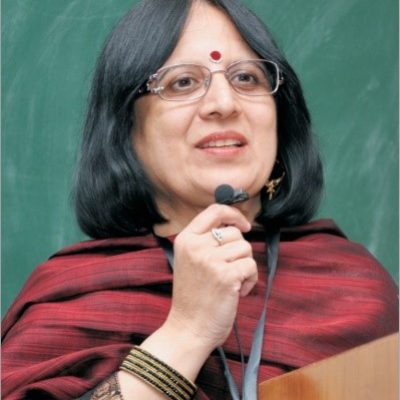
Prof. Pami Dua
Dr. Pami Dua is Senior Professor of Economics and Former Director of the Delhi School of
Economics. She earlier served the University of Delhi in various capacities including Dean of
Academic Activities and Projects; Chairperson, Research Council, Dean Research of
Humanities and Social Sciences and Coordinator of the University’s Internal Quality
Assurance Cell.
Dr Dua is currently a part-time member of the Economic Advisory Council to the Prime
Minister (EAC-PM). She is also serving as Distinguished Fellow of the Research and
Information System for Developing Countries (RIS), New Delhi and a member of the
Governing Council of the Centre for Advanced Financial Research and Learning (CAFRAL),
Mumbai. She is also a member of the Governing Body of the Dayalbagh Educational Institute
(Agra) and of the Research and Innovation Council in Vidyashilp University (Bengaluru).
She has also been serving as a Senior Research Fellow with the Economic Cycle Research
Institute (ECRI) in New York.
She has been a member of the first Monetary Policy Committee of the Reserve Bank of India
(2016-2020). She has served as Co-Chair of the Task Force on Macroeconomics, Trade and
Livelihoods under Think20 (T20) / G20, India, 2023. She has been a Distinguished Fellow of
the Indira Gandhi Institute of Development Research (IGIDR), Mumbai and a member of the
Governing Council of the Madras Institute of Development Studies, Chennai. She earlier
served as the President of the Indian Econometric Society (2015-16) and as the India
Coordinator of the United Nations Global Forecasting Model - Project LINK. She has also
served as Editor of the Indian Economic Review, journal of the Delhi School of Economics,
for almost two decades.
She has published widely in time series econometrics, forecasting, macroeconometrics,
monetary policy, business cycle analysis and sustainable development. She has four decades
of experience in teaching of macroeconomics, econometrics and forecasting. She earlier
taught at the University of Connecticut, USA and Wayne State University, Michigan, USA,
and has also been affiliated with Yale University as well as Columbia University.
She completed her B.A. (Hons.) in Economics from Lady Shri Ram College, University of
Delhi and obtained her Masters (with distinction) and Doctorate in Economics from London
School of Economics.
She has been conferred the highest honour of the University of Delhi, Nishtha Dhriti Satyam
Samman, for exemplary contribution to the development of the University and adherence to
its ideals, values and principles. She has been honoured with the Distinguished Alumni
Award from Lady Shri Ram College and the Dayalbagh Educational Institute (Honorary).
She has also been conferred the National Systems Gold Medal by the Systems Society of
India for her outstanding contributions in the area of Economics and Social Sciences.
ABSTRACT
In the contemporary context of international relations and governance, power is commonly
defined as the capacity of a state or entity to influence the behaviour of other actors in order
to achieve its strategic objectives. Power could be hard power, soft power or an
amalgamation of the two i.e. smart power. Hard power refers to the military and economic
capabilities of a state or institution used to influence others through coercion or
inducement—such as the use of military force, financial assistance, sanctions, or regulatory
authority. Soft power, on the other hand, is the ability to shape preferences, perceptions, and
behaviour through appeal and attraction. It is rooted in cultural influence, values, ideology,
diplomacy, and the legitimacy of institutions. Both concepts are crucial, but alone, they are
limited: hard power without values can lead to oppression, while soft power without capacity
can be ineffective. This leads to the evolution of smart power, which is not merely the
arithmetic sum of hard and soft power, but a strategic, context-sensitive synergy of both.
While the concept of smart power—the strategic combination of hard power and soft
power—has gained prominence in foreign policy discourses, its application remains
predominantly materialist and instrumental. This paper seeks to introduce a paradigm shift by
arguing that spiritual consciousness, conscientiousness, and community engagement are
critical, yet underexplored, dimensions of smart power which inspire long-term
transformation. We propose that spirituality is not merely a private or cultural phenomenon,
but a strategic and structural asset—one that reinforces both soft and hard power when
mobilized inclusively and ethically.
This paper investigates the key determinants of smart power, particularly how it relates to
economic growth, sustainable development, and community engagement. We argue that in an
era of rising global interdependence, nations that can effectively synthesize institutional
capability (hard power) with cultural resonance, ethical values, spiritual consciousness and
conscientiousness and community engagement (soft power)—thereby exercising smart
power—are better positioned to achieve long-term prosperity, resilience, and global
legitimacy. To empirically examine this relationship, we conduct a comparative analysis of
soft power in developed and emerging economies on the basis of a Global Soft Power Index.
This index offers a multidimensional view of soft power across countries, incorporating
metrics such as governance, international relations, business and trade, culture and heritage,
media presence, and education—allowing us to assess how the interplay of soft and hard
power correlates with national development and influence.
Countries that strategically align hard capabilities with values, inclusion, and community-
based models of development—in other words, that successfully operationalize smart
power—are more likely to achieve sustained and broad-based growth. This highlights how
2
values-driven engagement is not just desirable—it is economically and strategically
advantageous.
We highlight India as a prime example of smart power, blending rising hard
power—economic and military strength—with deep-rooted soft power, including cultural
heritage and spiritual traditions. As a practical, grounded case, we turn to the Dayalbagh
model in Agra, Uttar Pradesh, India, a community that demonstrates how consciousness,
conscientiousness, and community engagement can drive transformative influence. Guided
by the Sigma Six Q-V-A model- a socio-economic-technological-spiritual-climatic model
comprising agriculture & dairy, education & healthcare, air quality, water quality, innovation,
and human values—Dayalbagh integrates institutional infrastructure and technological
discipline (hard power) with voluntary participation, ethics, and cultural appeal (soft power).
These elements function as a cohesive system, creating a form of grassroots smart power
rooted in inner transformation and collective action. Dayalbagh exemplifies how sustainable
development and influence can emerge through inclusion, moral leadership, and spiritual
consciousness.
We conclude by emphasizing the need to rethink the architecture of power in the 21st century.
In an age of polycrisis—ranging from climate change and inequality to polarization and
institutional distrust—effective leadership and influence will not come solely from financial
muscle or media visibility. Rather, it will come from the ability to inspire, include, and
sustain. Spiritual consciousness, conscientiousness, and meaningful community engagement
are essential components of such leadership. When fused with institutional strength and
strategic thinking, they form the foundation of true smart power—one that is not only capable
of shaping global outcomes, but also of ensuring that those outcomes are just, inclusive, and
sustainable.
Talk Timings:
Session Chair:
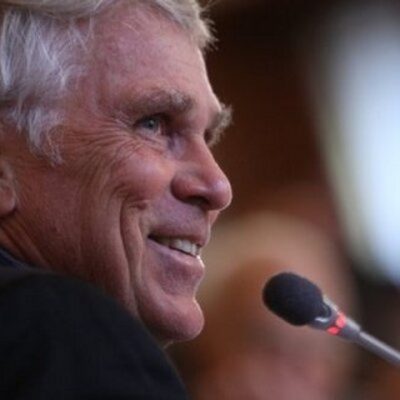
Prof. Mark Juergensmeyer
Santa Barbara, USA
TBA
TBA
Talk Timings:
Session Chair:
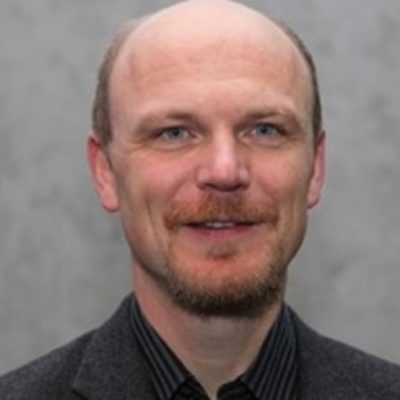
Prof. Andreas Müller
TBA
TBA
Talk Timings:
Session Chair:

Prof. Subramanian
TBA
TBA
Talk Timings:
Session Chair:

Prof. Nancy Cooke
Tempe, USA
Nancy J. Cooke is a professor in Human Systems Engineering at the Polytechnic School, one of the Ira A. Fulton Schools of Engineering at Arizona State University. She is also Senior Scientific Advisor for the Global Security Initiative’s Center for Human, AI, and Robot Teaming. She received her PhD in Cognitive Psychology from New Mexico State University in 1987. Dr. Cooke is a Past President of the Human Factors and Ergonomics Society and the past chair of the Board on Human Systems Integration at the National Academies of Science, Engineering, and Medicine. Professor Cooke’s research interests include the study of individual and team cognition and its application to remotely piloted aircraft systems, human-robot teaming, and emergency response systems. She specializes in the development, application, and evaluation of methodologies to elicit and assess individual and team cognition. Her work is funded by DoD and has been widely published.
TBA

Prof. Jamie Gorman
TBA
TBA
Day 02 | Tuesday, September 16, 2025

Prof. Wolfgang Duschl
TBA
TBA
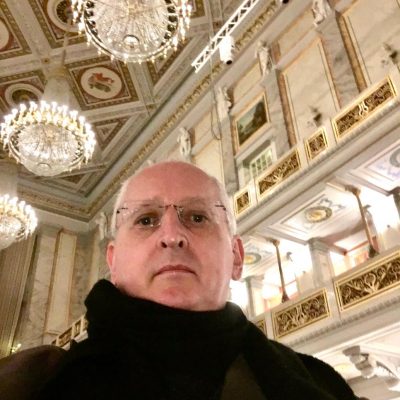
Herbert Lang
TBA
TBA
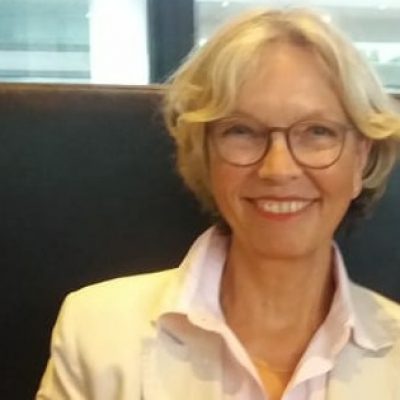
Prof. Anna M. Horatschek
TBA
Language, Experience, and Spiritual Reality. A Reading of Maharaj Sahab ́s
Discourses on Radhasoami Faith.
Anna M. Horatschek
“[...] religious matters are more or less shrouded in sentimentality, mysticism, and
dogmatic faith“. Maharaj Sahab, the Third Leader of Radhasoami Faith, opens his
Discourses on Radhasoami Faith with this observation. In order to „endow religion with
practical and scientiIic interest“ instead, he dictates the Discourses in 1906, which -
together with a book of poetry he wrote - according to Saran Das Mehta “contain the
teachings of the Radhasoami Faith”.
The general problem of ́translating ́ individual experience into language is ampliIied
manifold when it comes to mystical experiences. Maharaj Sahab, in addition to this general
problem of a verbal representation of mystical experience, aims to explain Radhasoami
Faith as a religion „based upon, and supported by, reason and logic“ in order to meet the
expectations and needs especially of „people who have received English education“
(Mehta). To this end, he dictates his book in English, and thus translates the Religion of
the Saints into a language that implies a cultural, philosophical and religious cosmology
very different from those traditions Radhasoami Faith is immersed in. And what ́s more:
With the scientiIic discourse, he adopts a discourse that for decades of Western criticism
has been considered as categorically incompatible with matters of faith and spiritual
experiences.
Maharaj Sahab explicitly acknowledges these problems in various passages of the book.
My lecture will examine, in which way Maharaj Sahab addresses and deals with these
problems, and how he implicitly devises a differentiated model of the relation between
language, experience, and spiritual reality.
